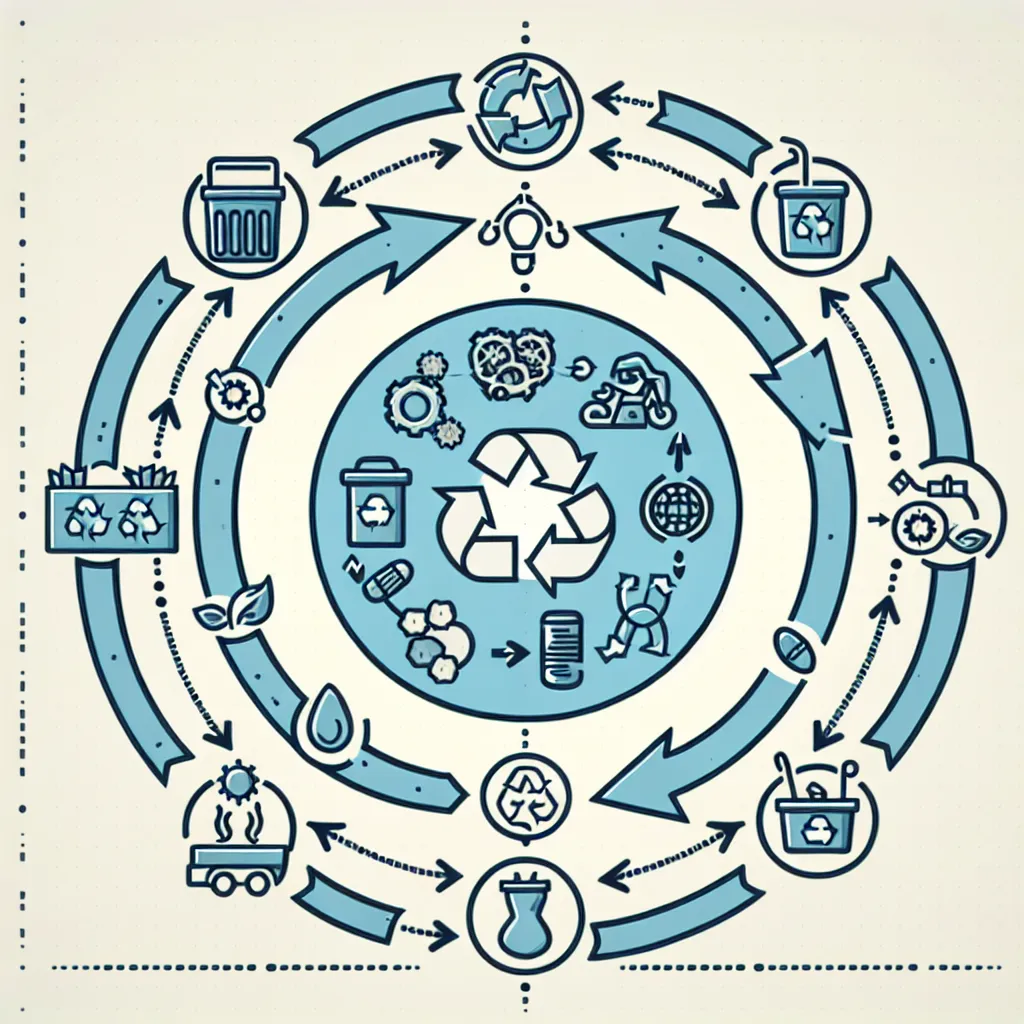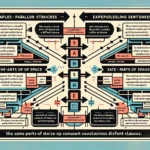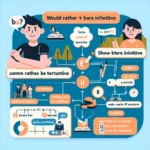The circular economy is a revolutionary concept that has gained significant traction in recent years as a sustainable alternative to our current linear economic model. This IELTS Reading practice test focuses on the impact of the circular economy on reducing waste, providing you with an opportunity to enhance your reading skills while exploring this crucial environmental topic.
 Circular Economy Concept
Circular Economy Concept
IELTS Reading Test: The Circular Economy and Waste Reduction
Passage 1 – Easy Text
The circular economy is an economic model designed to eliminate waste and maximize resource efficiency. Unlike the traditional linear economy, which follows a “take-make-dispose” pattern, the circular economy aims to keep resources in use for as long as possible. This is achieved through various strategies such as reusing, recycling, and remanufacturing products and materials.
One of the primary benefits of the circular economy is its potential to significantly reduce waste. By designing products with longevity and recyclability in mind, companies can minimize the amount of waste that ends up in landfills or incinerators. For example, some furniture companies now offer modular designs that allow for easy repair and replacement of individual components, extending the product’s lifespan.
Another key aspect of the circular economy is the concept of “waste as a resource.” This involves finding innovative ways to repurpose waste materials into new products. For instance, some fashion brands are now creating clothing from recycled plastic bottles, turning what was once considered waste into valuable raw material.
The implementation of circular economy principles can also lead to substantial economic benefits. By reducing the need for new raw materials and minimizing waste management costs, businesses can improve their bottom line while simultaneously reducing their environmental impact. Moreover, the circular economy can create new job opportunities in areas such as product design, repair services, and recycling technologies.
Governments around the world are increasingly recognizing the importance of the circular economy in addressing environmental challenges. Many countries have introduced policies and initiatives to promote circular practices, such as extended producer responsibility schemes and tax incentives for recycling and reuse.
However, transitioning to a fully circular economy is not without its challenges. It requires significant changes in product design, business models, and consumer behavior. Additionally, some materials are currently difficult or impossible to recycle, necessitating further technological innovations.
Despite these challenges, the circular economy represents a promising approach to reducing waste and promoting sustainable resource use. As more businesses and governments embrace circular principles, we can expect to see a gradual shift towards a more sustainable and efficient economic model.
Questions 1-7
Do the following statements agree with the information given in Reading Passage 1? Write
TRUE if the statement agrees with the information
FALSE if the statement contradicts the information
NOT GIVEN if there is no information on this
- The circular economy model aims to maximize resource efficiency.
- In a circular economy, all products are designed to be 100% recyclable.
- Some furniture companies are adopting modular designs to extend product lifespan.
- The circular economy concept was first introduced in the 1990s.
- Recycling plastic bottles into clothing is an example of treating waste as a resource.
- Implementing circular economy principles always leads to immediate cost savings for businesses.
- Many governments are introducing policies to promote circular economy practices.
Questions 8-13
Complete the sentences below. Choose NO MORE THAN TWO WORDS from the passage for each answer.
- Unlike the circular economy, the traditional linear economy follows a “take-make-____” pattern.
- The circular economy aims to keep resources in use for as ____ as possible.
- By designing products with longevity and recyclability, companies can reduce waste in ____ or incinerators.
- The circular economy can create new job opportunities in areas such as product design, ____ services, and recycling technologies.
- Extended producer responsibility schemes and ____ for recycling are examples of government initiatives to promote the circular economy.
- Transitioning to a circular economy requires changes in product design, business models, and ____ behavior.
Passage 2 – Medium Text
The circular economy’s impact on waste reduction extends far beyond simple recycling initiatives. It represents a fundamental shift in how we perceive and manage resources throughout their lifecycle. This paradigm shift is crucial in addressing the mounting waste crisis that many countries face today.
One of the most significant contributions of the circular economy to waste reduction is its emphasis on product longevity. By designing products that are durable, repairable, and upgradable, manufacturers can significantly extend the useful life of goods, thereby reducing the frequency at which items are discarded. This approach stands in stark contrast to the planned obsolescence strategy often employed in the linear economy, where products are deliberately designed with a limited lifespan to encourage frequent replacements.
The circular economy also promotes the concept of “servitization,” where consumers purchase the service a product provides rather than the product itself. This model incentivizes companies to maintain and repair their products, as they remain the owners. For instance, some lighting companies now offer “light as a service,” where they install, maintain, and upgrade lighting systems for clients, taking responsibility for the entire lifecycle of the products.
Another crucial aspect of the circular economy’s waste reduction potential lies in its promotion of closed-loop systems. In these systems, the waste or by-products from one process become the raw materials for another. This approach is particularly effective in industrial symbiosis, where different industries collaborate to utilize each other’s waste streams. For example, the waste heat from a factory might be used to warm nearby buildings, or the CO2 emissions from one industry could be captured and used as a raw material in another.
The circular economy also addresses the issue of food waste, which is a significant contributor to landfill volumes and greenhouse gas emissions. By promoting better inventory management, encouraging the use of “imperfect” produce, and developing markets for by-products, the circular economy can significantly reduce food waste throughout the supply chain.
In the realm of packaging, circular economy principles are driving innovations in biodegradable and compostable materials. Some companies are experimenting with packaging made from agricultural waste or even edible materials, dramatically reducing the environmental impact of product packaging.
The digital revolution plays a crucial role in enabling many circular economy strategies. Digital platforms facilitate sharing economy models, which increase the utilization rate of products and assets. Advanced tracking technologies enable better management of resources throughout their lifecycle, while 3D printing allows for on-demand production of spare parts, reducing the need for large inventories.
Despite its potential, the transition to a circular economy faces several challenges. These include the need for significant upfront investments, the complexity of redesigning supply chains, and the challenge of changing deeply ingrained consumer behaviors. However, as the environmental and economic benefits of the circular economy become increasingly apparent, more businesses and governments are embracing this model as a key strategy for sustainable development and waste reduction.
Questions 14-19
Choose the correct letter, A, B, C, or D.
-
According to the passage, the circular economy’s approach to product design:
A) Focuses mainly on recyclability
B) Emphasizes durability and repairability
C) Encourages frequent product replacements
D) Prioritizes low-cost manufacturing -
The concept of “servitization” in the circular economy involves:
A) Selling more services instead of products
B) Providing products as a service
C) Increasing the range of services offered
D) Outsourcing all service-related activities -
In closed-loop systems:
A) All waste is eliminated
B) Waste from one process becomes input for another
C) Only biodegradable materials are used
D) Products are always recycled into the same type of product -
The circular economy addresses food waste by:
A) Only focusing on consumer behavior
B) Promoting the use of “perfect” produce only
C) Encouraging better inventory management and use of by-products
D) Banning the disposal of food waste in landfills -
In packaging, circular economy principles are driving:
A) The use of more plastic
B) Innovations in biodegradable and compostable materials
C) Larger packaging sizes
D) The elimination of all packaging -
The digital revolution supports the circular economy by:
A) Replacing all physical products with digital ones
B) Eliminating the need for manufacturing
C) Enabling sharing models and better resource tracking
D) Increasing energy consumption
Questions 20-26
Complete the summary below. Choose NO MORE THAN TWO WORDS from the passage for each answer.
The circular economy offers a solution to the (20) ____ that many countries are facing. It emphasizes (21) ____, which contrasts with the (22) ____ strategy often used in the linear economy. The concept of (23) ____ is promoted, where consumers buy the service rather than the product. The circular economy also encourages (24) ____, where industries use each other’s waste streams. In the food industry, it addresses (25) ____ through various strategies. Despite its benefits, the transition to a circular economy faces challenges, including the need for upfront investments and changes in (26) ____.
Passage 3 – Hard Text
The circular economy’s impact on waste reduction is profound and multifaceted, extending beyond mere diversion from landfills to encompass a comprehensive reimagining of our relationship with resources and waste. This paradigm shift is increasingly recognized as a critical component in addressing the interconnected challenges of resource scarcity, environmental degradation, and climate change.
At its core, the circular economy challenges the linear extractive model that has dominated industrial processes since the Industrial Revolution. This linear approach, characterized by resource extraction, production, consumption, and disposal, has led to unprecedented levels of waste generation and environmental degradation. In contrast, the circular economy posits a regenerative system where waste and pollution are designed out, products and materials are kept in use, and natural systems are regenerated.
One of the most significant impacts of the circular economy on waste reduction is its emphasis on waste prevention rather than waste management. This preventative approach begins at the design stage, where products are conceived with their entire lifecycle in mind. Design for disassembly, for instance, ensures that products can be easily taken apart at the end of their life, facilitating the recovery and reuse of components and materials. This approach not only reduces waste but also conserves the embedded energy and resources in these materials, significantly lowering the overall environmental impact.
The circular economy also promotes innovative business models that inherently reduce waste generation. Product-as-a-service models, where manufacturers retain ownership of their products and sell their use or performance, incentivize the production of durable, easily maintainable goods. This shift from ownership to access not only reduces waste but also aligns the interests of producers and consumers in prolonging product lifespans.
In the realm of biological materials, the circular economy emphasizes cascading uses and the return of nutrients to the biosphere. This approach transforms what was once considered waste into valuable resources. For example, in the food system, circular principles can be applied to create value from food by-products and waste streams. Innovative companies are now producing textiles from citrus peels, mushroom-based packaging materials, and even bioplastics from food waste.
The circular economy’s impact on waste reduction is particularly evident in the construction sector, one of the largest contributors to waste globally. Circular principles in construction promote the use of modular, standardized components that can be easily disassembled and reused. Urban mining, the practice of recovering materials from buildings slated for demolition, is becoming increasingly sophisticated, enabled by digital material passports that track the composition and value of materials in buildings.
In the electronics sector, where rapid technological advancement often leads to premature obsolescence and significant e-waste generation, circular economy principles are driving new approaches. Modular design, right to repair initiatives, and take-back programs are extending the lifespan of electronic devices and ensuring that valuable materials are recovered at the end of a product’s life.
The circular economy’s waste reduction potential is further amplified by technological advancements. Artificial intelligence and machine learning are being employed to optimize resource use and predict maintenance needs, thereby reducing waste from overproduction and premature product failure. Blockchain technology is enhancing traceability in supply chains, facilitating more efficient resource use and enabling new models of shared ownership and use.
However, the transition to a fully circular economy faces significant challenges. Existing infrastructure, designed for a linear economy, can be a barrier to implementing circular practices. Regulatory frameworks often lag behind circular innovations, sometimes inadvertently hindering progress. Moreover, the complexity of global supply chains makes it challenging to implement circular principles consistently across different geographies and regulatory environments.
Despite these challenges, the circular economy’s potential to drastically reduce waste is increasingly recognized by policymakers, businesses, and consumers alike. As we grapple with the urgent need to address climate change and resource depletion, the circular economy offers a promising path forward, reimagining our relationship with resources and waste in a way that could lead to a more sustainable and prosperous future.
Questions 27-32
Choose the correct letter, A, B, C, or D.
-
According to the passage, the circular economy:
A) Focuses solely on recycling
B) Challenges the traditional linear economic model
C) Is a new concept developed in the last decade
D) Primarily addresses issues in developing countries -
The circular economy’s approach to waste reduction primarily emphasizes:
A) Improved waste management techniques
B) Waste prevention through design
C) Increased recycling facilities
D) Consumer education on waste sorting -
In the circular economy, product-as-a-service models:
A) Encourage consumers to buy more products
B) Reduce the quality of products
C) Align producer and consumer interests in product longevity
D) Increase the cost of goods for consumers -
The passage suggests that in the construction sector, circular economy principles promote:
A) The use of more concrete in buildings
B) Taller buildings to save land
C) Modular components and urban mining
D) Cheaper construction materials -
In the electronics sector, circular economy principles are driving:
A) The production of more disposable electronics
B) Increased energy consumption in manufacturing
C) Modular design and right to repair initiatives
D) Higher prices for electronic devices -
According to the passage, which of the following is a challenge in transitioning to a circular economy?
A) Lack of consumer interest
B) Insufficient technological advancements
C) Existing infrastructure designed for a linear economy
D) Shortage of raw materials
Questions 33-40
Complete the summary below. Choose NO MORE THAN TWO WORDS from the passage for each answer.
The circular economy represents a shift away from the (33) ____ that has dominated since the Industrial Revolution. It emphasizes (34) ____ rather than waste management, starting with product design. (35) ____ ensures products can be easily dismantled for material recovery. In the biological realm, the circular economy promotes (36) ____ and the return of nutrients to the biosphere.
In construction, one of the largest waste contributors, circular principles encourage the use of (37) ____ that can be reused. The practice of recovering materials from old buildings is known as (38) ____. In the electronics sector, initiatives like (39) ____ are extending product lifespans.
Technological advancements like (40) ____ are being used to optimize resource use and predict maintenance needs, further reducing waste. Despite challenges, the circular economy offers a promising approach to addressing resource scarcity and environmental issues.
Answer Key
Passage 1
- TRUE
- NOT GIVEN
- TRUE
- NOT GIVEN
- TRUE
- FALSE
- TRUE
- dispose
- long
- landfills
- repair
- tax incentives
- consumer
Passage 2
- B
- B
- B
- C
- B
- C
- mounting waste crisis
- product longevity
- planned obsolescence
- servitization
- closed-loop systems
- food waste
- consumer behaviors
Passage 3
- B
- B
- C
- C
- C
- C
- linear extractive model
- waste prevention
- Design for disassembly
- cascading uses
- modular, standardized components
- urban mining
- right to repair
- Artificial intelligence
Conclusion
This IELTS Reading practice test on the impact of the circular economy on reducing waste provides valuable insights into this important topic while helping you improve your reading skills. Remember to practice regularly and analyze your performance to identify areas for improvement. For more IELTS preparation resources, check out our articles on challenges in reducing plastic pollution and the rise of zero-waste living.


